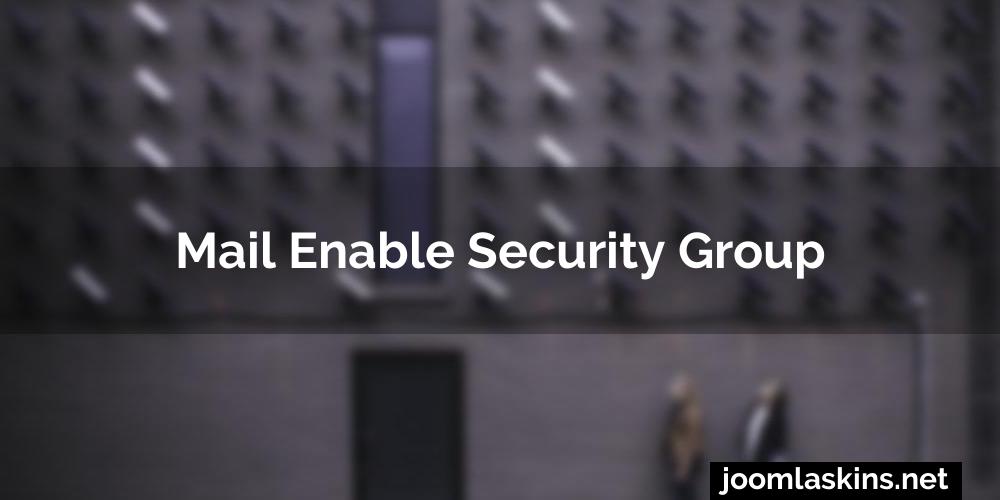Welcome to the world of mail enable security groups! It’s a wild and wonderful world full of possibilities and potential. And it’s also a world full of dangers and risks. So if you’re looking to secure your mail enable server then you’ll want to take a closer look at security groups.
Defining Security Groups
Security groups are a way of organizing users and computers on a network. They can be used to assign permissions to resources such as files and folders and to restrict access to certain areas of the network. Security groups can also be used to apply certain policies such as password policies and software restrictions.
| Group Type | Description |
|---|---|
| Global | A global group is one that is available to all domains in a network. |
| Domain Local | A domain local group is one that is available only to the domain in which it is created. |
| Universal | A universal group is one that is available to all domains in a network. |

More about this: 0x1 Task Scheduler and Set Calendarprocessing.
Creating Security Groups
No matter your purpose in setting up mail enabled security groups the process of making them is pretty intuitive. What’ll you need to do is get yourself logged into your mail server–nothing more than a few clicks in the top right corner. Once you’ve done that you simply have to figure out which of the several different options you want to activate.
You’ll have the choice between distribution groups security groups and dynamic distribution groups. The good news is the names are pretty self-explanatory. Whether you need mailing lists reassignable roles or an organization hierarchy–we’ve got you covered!
For a security group you’ll naturally choose the ‘Security Groups’ option. You’ll then be prompted to figure out whether you’re aiming to create a single group or multiple ones–it’s up to you! SharePoint admins will handle the single-group creation in their own way–but for the most part all you really need to do is set a name for each group and designate it’s organizational structure. Easy-peasy lemon-squeezey!
Once you’ve done that you’ll hit ‘Save’ and voilà! You’re now the proud producer of an innovative mail enabled security group. From here all you’ll need to do is configure your settings assign roles and permissions and you’ll be ready to roll. Now that wasn’t so hard was it?
Adding Members to Security Groups
So you’re ready to add that extra layer of security to your mail-enabled security groups? Feeling a tad overwhelmed? Don’t worry – we’ll walk you through the process from start to finish! The first step is to add members to the group.
Let’s get started. If you have your list of members ready and handy – great! – if not no worries. It’s super easy to gather them right inside the ‘Add Members’ section of the security group. Now you may be wondering ‘What are all these choices?’
Here’s the scoop – you can add members as individuals or members of a security group distribution group or contacts. You can even add members from a text file or a web list. It’s pretty nifty so take a minute to explore the options. Once you make your decision select ‘Ok’ – and that’s it – you’ve added your members! Easy peasy.
Now if you want to add or remove members later on you’re all set. Just use the ‘Add Members’ and ‘Remove Members’ sections in the security group window.
It’s that simple. Adding members to your mail-enabled security groups is a breeze and now you’re ready to start taking advantage of that extra layer of security. Have fun and keep on mail-enabling!
Setting Permissions for Security Groups
Setting permissions to your security groups can be a daunting task – or an effortless and sleek endeavor depending on how organized you are. But don’t sweat it – using mail enable security groups will make it a breeze.
First of all it’s important to understand the purpose of setting up security groups: they provide a way to manage user and group access to your mail enable software. In other words the right permissions will ensure that users have the right access to mail enable functions and features.
Before you start it’s essential to have a clear view of your users and their roles in the company. You’ll need to understand who will be granted access to what and what type of permissions they’ll need. To make this easier you can use mail enable’s role-based security groups. These allow for the creation of predefined roles with associated permissions making it simpler to assign access rights.
When you’re in the process of setting up security groups you’ll be able to select from a predefined list of options. You can also modify the permissions of existing groups or create new ones in the same place.
Be sure to pay attention to detail and think through who needs access to what. Assigning too much or too little access can cause security problems for your mail enable software. Once you’ve got your groups set up you’ll be able to easily modify permissions as needed.
Now you can sit back and relax – mail enable security groups make it easy to organize and set permissions for everyone in your organization. Just remember: don’t be stingy when providing users with security rights – it’s essential to have the right team dynamics and workflows in place.
Resources